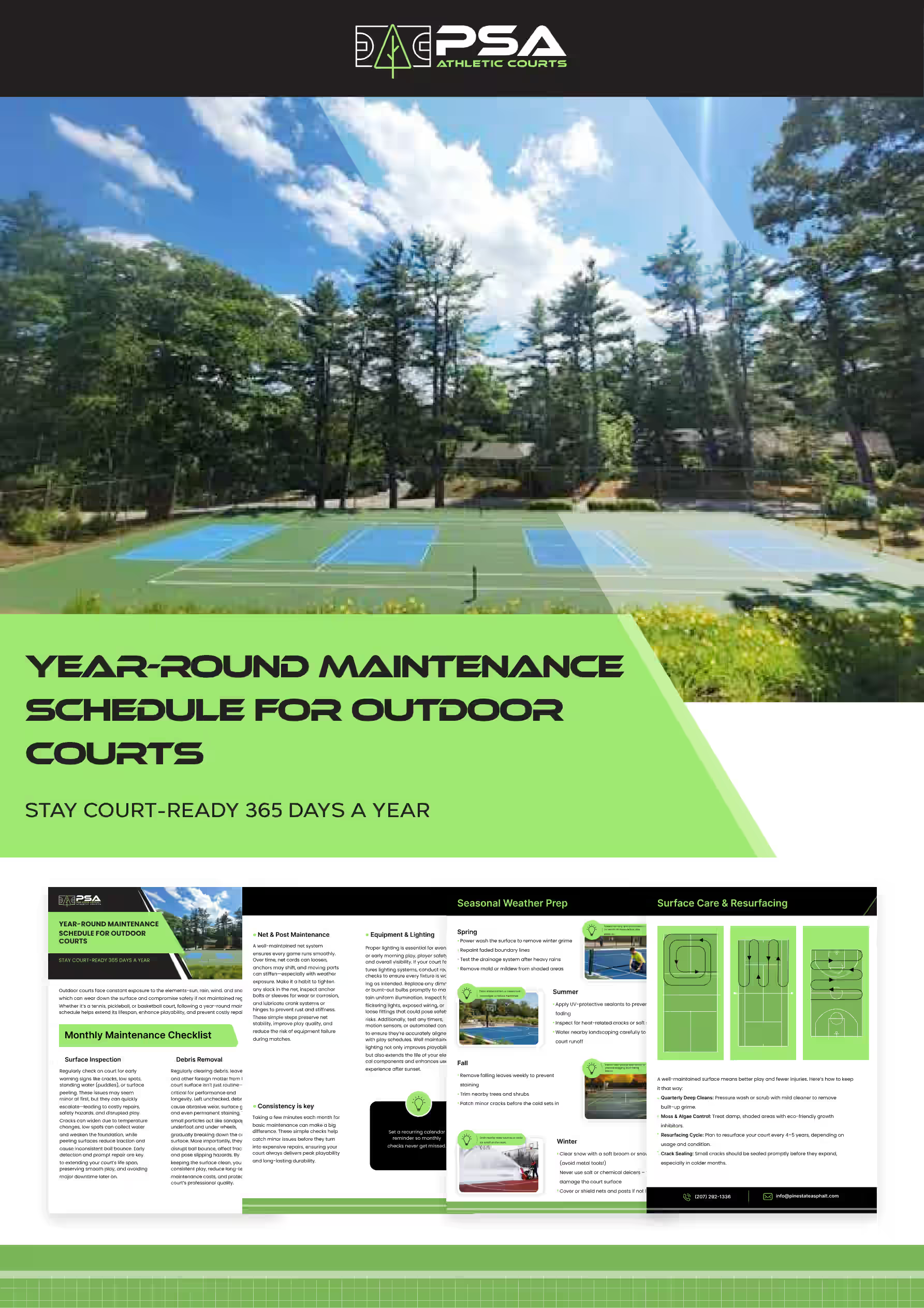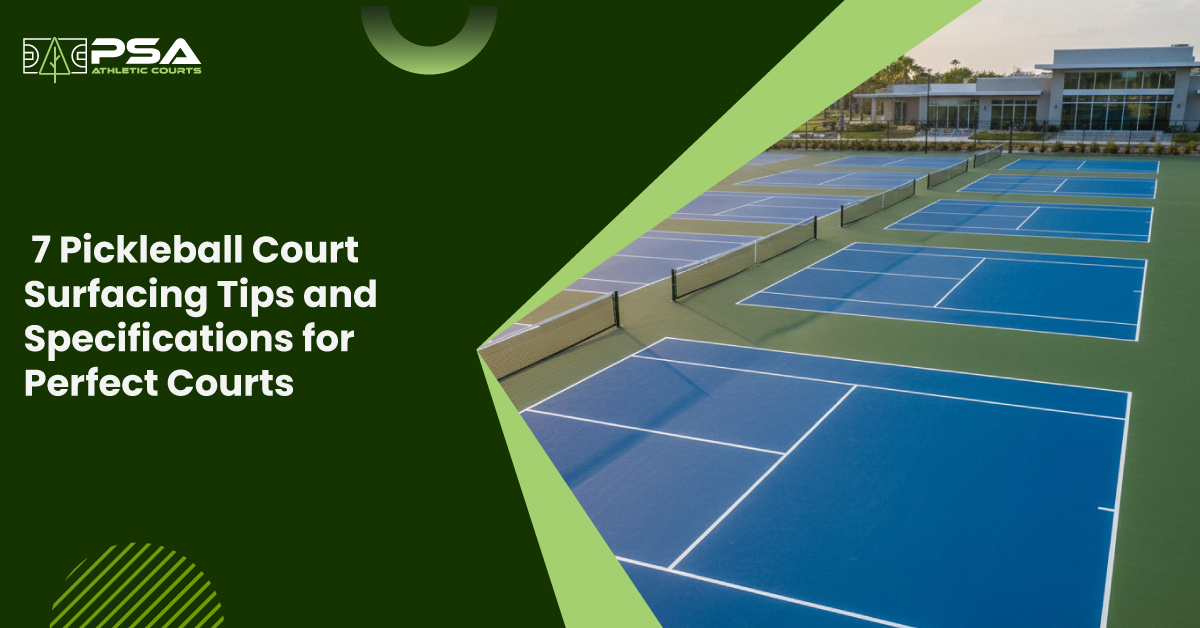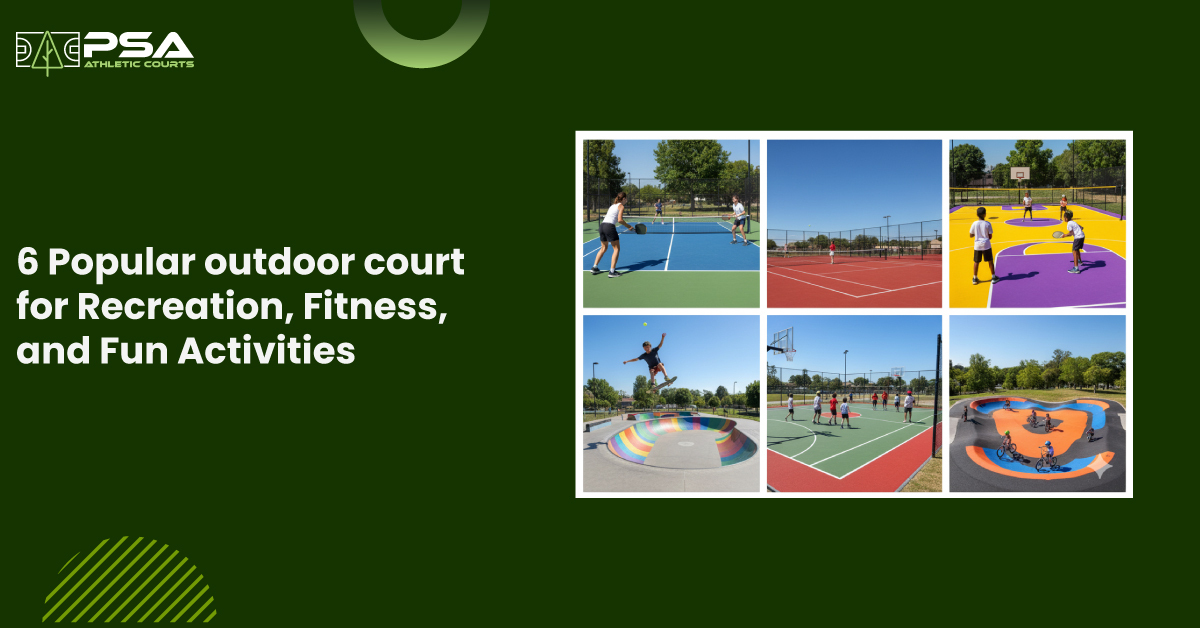Basketball reigns as one of the most popular sports in the US, it isn’t just a game, it’s a passion and community builder. With this massive popularity, maintaining a basketball court goes far beyond the initial construction. Regular maintenance is key to keeping the game safe, smooth, and enjoyable.
One such critical aspect of court maintenance is resurfacing. This process not only restores the court’s appearance but also extends its lifespan and ensures optimal play conditions. But here’s the big question that court owners often struggle with: which amongst asphalt and acrylic is the best surface for basketball court resurfacing?
Wondering the same? Don't worry! This resurfacing guide by Pine State Courts will break down the differences between these two popular resurfacing options, weigh their pros and cons, and help you decide which one is the best fit for your court.
Understanding Basketball Court Resurfacing
Before diving into the comparison between asphalt vs. acrylic, let’s first take a look at what basketball court resurfacing entails. If you are building the court for the first time, here’s our guide on Basketball court dimensions 101 to get you started.
Resurfacing a basketball court involves repairing the court for any cracks or other surface issues like waterlogging. The common steps involved in basketball court resurfacing include:
- Inspecting the basketball court surface for any cracks or waterpooling issues.
- Cleaning the court surface by pressure washing.
- Filling in the damaged area to create a leveled surface.
- Applying an acrylic resurfacer for a smooth base.
- Adding the color coating to restore the court’s vibrant colors.
- Adding the regulation lines through line striping.
Following these resurfacing steps and regular upkeep ensure your court remains in its best shape and enhance its longevity.
Asphalt Basketball Court Surface
The Asphalt basketball court surface is one of the most common surfaces for outdoor basketball court installation. It is best suited to build an outdoor basketball court with its smooth and hard surface that provides good traction for player performance.
Some of the famous asphalt basketball courts include, Rucker Park in New York, Venice Beach Courts, and the courts at Kalemegdan Park in Serbia.
Let’s now take a look at the advantages and drawbacks of an Asphalt basketball court.
Advantages:
- Supports a smooth gameplay with a consistent bounce for the basketball.
- Provides excellent traction and shock absorption, best suited for building outdoor courts.
- Can withstand heavy use and varied weather conditions, ensuring long-term performance.
- More affordable than other court surfaces for Basketball court.
Drawbacks:
- Needs resealing every few years to prevent cracking.
- Harder on players’ joints compared to cushioned acrylic systems.
Acrylic Basketball Court Surface
The acrylic basketball courts resurfacing are usually built on a concrete or asphalt surface. This colorful layer of acrylic added during basketball court installation, increases the smoothness and durability of these courts. Adding a special cushioned acrylic surface further improves the player's safety and protects their joints.
An acrylic court surface is best for building both indoor basketball courts and outdoor basketball courts. They are a common sight in school, community, and private basketball facilities.
Let’s now take a look at the advantages and drawbacks of acrylic basketball courts:
Advantages:
- These courts can withstand extreme weather conditions without requiring much upkeep besides the basic cleaning.
- Vibrant, customizable colors for team or school pride
- Increases the team spirit and confidence with school or team colors when playing on the home court.
- Increases the safety and player performance by providing a smooth cushioned surface.
Drawbacks:
- Higher upfront installation cost
- Can become slippery after rainfall if not properly maintained
Resurfacing: Asphalt vs. Acrylic Comparison Guide
Now that you know all about the acrylic and asphalt surfaces for basketball court resurfacing, here’s an easy comparison guide for resurfacing: Asphalt vs. Acrylic:

Maintenance Tips for Court Longevity from Basketball Court Creator
Regular maintenance is the easiest way to keep your basketball court looking great and performing at its best. Staying on top of small issues prevents costly repairs and extends the time between resurfacings.
While court maintenance isn’t hard maths, here’s a few tips from a basketball court creator to get you started on your journey:
- Clean regularly: Sweep outdoor courts often to remove dirt and debris. Avoid standard pressure washers unless you have a professional sports court pressure washer designed for acrylic surfaces. Using the wrong equipment can damage coatings or strip paint.
- Check the court for any signs of cracks on the surface and repair them as soon as possible to keep them from widening further.
- If you observe any severe algal growth on the court, contact your basketball court designer for support.
- Refresh paint and lines: A new coat of color or crisp line striping not only looks better it improves visibility and playability.
- Ensure proper drainage to prevent water logging and deepening of cracks.
Takeaway
Basketball court resurfacing is more than just enhancing the aesthetics of the court, it impacts the player safety and performance directly. When it comes to the resurfacing material, both asphalt and acrylic have their own strengths.
Where asphalt is budget-friendly, tough, and an ideal surface for outdoor play; acrylic brings vibrant looks, a smoother feel, and added cushioning. The best choice however depends on your court’s location, usage, and budget.
At Pine State Courts, we build professional grade courts, be it a full court or backyard half courts. With our expert court design and maintenance support, your court will stay game-ready for years to come. Contact us for more information.
Frequently Asked Questions
1. What is the best finish for an outdoor basketball court?
The best finish for an outdoor basketball court is an acrylic finish over the asphalt surface. This duo results in a durable, aesthetic, and smooth playing surface that has a great traction and is safe for the players.
2. Is asphalt best for basketball courts for backyards?
Asphalt is a great option for backyards if you need the court to be built quickly and on a budget. This court is good for recreational play. Choose concrete for a backyard basketball court if you can invest more and desire a long-term life of the court.
3. How much does it cost to put in an indoor basketball court?
The cost to build an indoor basketball court depends on its size whether it’s a professional full court or a half court and the surface material used. This price can range anywhere from $10, 000 to $150, 000.
4. How long does an asphalt basketball court last compared to acrylic?
An asphalt basketball court lasts for around 25 years with regular maintenance and resurfacing. When this is compared to the life span of acrylic courts, they last for about 10 to 15 years.
5. What maintenance is required for asphalt vs. acrylic courts?
The maintenance required for asphalt courts includes regular cleaning, crack repairs or sealing, and resurfacing every 5 to 8 years. While an acrylic court requires the basic cleaning and occasional recoating.
6. Can I resurface my old concrete court with asphalt or acrylic?
Yes, you can resurface an old concrete court with an acrylic coat. Begin with repairing the damage, cleaning the surface, and then apply the acrylic resurfacer followed by colored acrylic coatings.
Applying a new asphalt layer over an existing concrete surface is generally not recommended as it can lead to long-term issues. It is better to remove the concrete or use a fabric overlay before adding the asphalt.
DOWNLOAD OuR
FREE GUIDE
Stay on top of your court maintenance all year. Whether it's rain, snow, summer, or fall - we've got you covered with this complete guide.
Get a complete month-by-month breakdown to keep your outdoor courts safe, clean, and game-ready.











